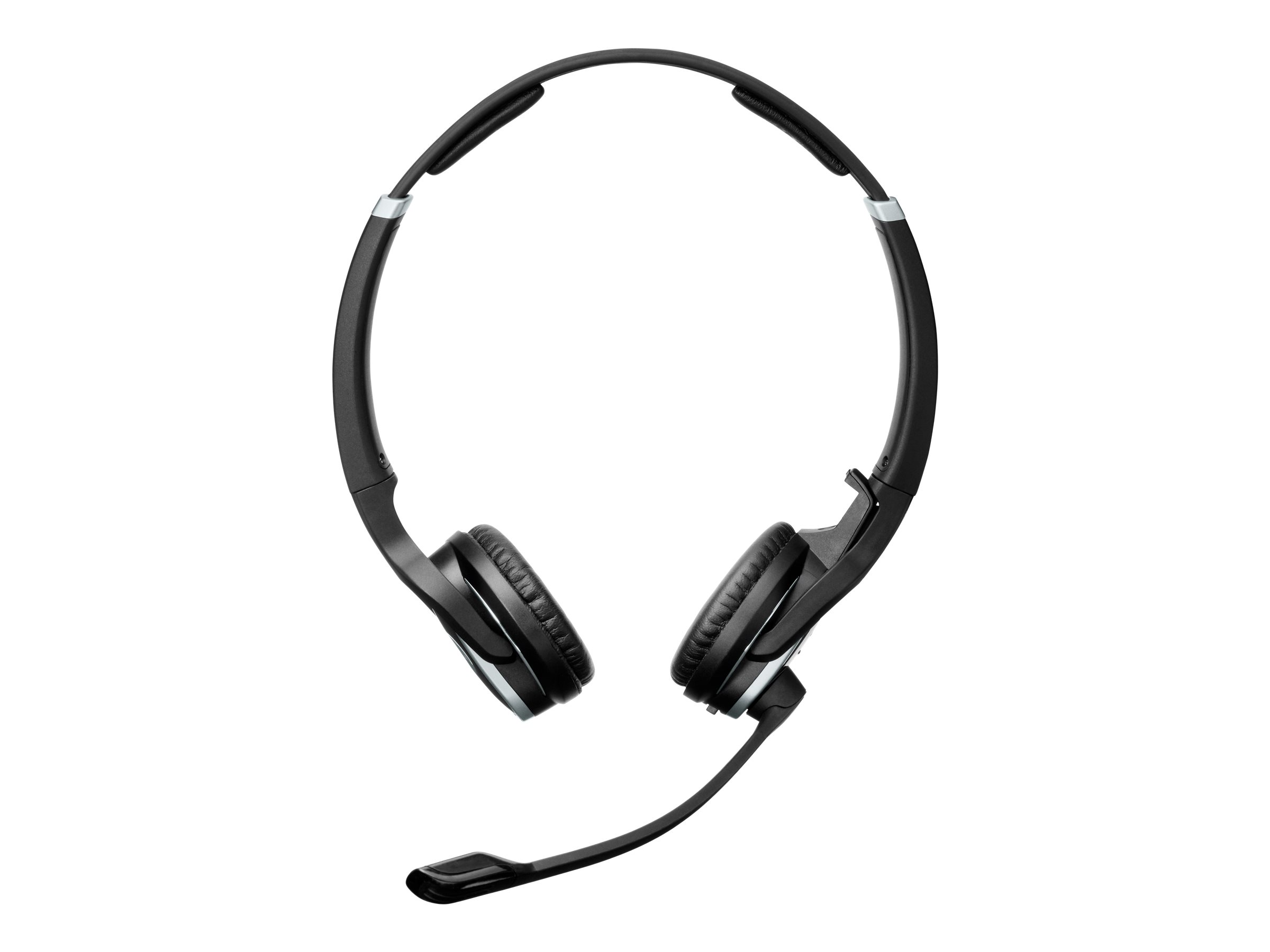
Get the key specs, technical data, ratings and full review of Sennheiser SD 30 HS all in one place. Compare your selected model with other alternatives and give your decision on the best headphones a solid base with our comprehensive overview.
design and dimensions sound quality microphone battery and charging
| DESIGN AND DIMENSIONS Sennheiser SD 30 HS |
|---|
| Product Type | Headset - DECT 6.0 - wireless | |
|---|---|---|
| Weight | 85 g | Better than 76 % of headphones rated. |
| Recommended Use | Phone, conference |
The wireless headphones Sennheiser SD 30 HS allow unrestricted movement, which increases the comfort of using the headphones. This feature is particularly popular with headphones for casual use. However, a certain limiting factor of wireless headphones compared to wired ones is a certain delay in sound transmission between the source and the headphones (but almost indistinguishable for the average user) and the need for regular charging. Unlike wired headphones, wireless headphones are charged separately.
The headphones are designed as on-ear. On-ear headphones are generally lighter. However, their design has fewer isolation capabilities, and therefore, for example, more sound can be let in and out compared to around-ear headphones. The weight of the headphones is 85 g.
| SOUND QUALITY Sennheiser SD 30 HS |
|---|
| Headphones Form Factor | On-ear | |
|---|---|---|
| Connectivity Technology | Wireless | |
| Wireless Technology | DECT 6.0 | |
| Frequency Response | 150 - 6800 Hz | Worse than 94 % of headphones rated. |
The sound quality can be affected by many factors. When it comes to frequency range, a wider range will allow more detail to be heard during your listening session. However, it is important to note that the ability to perceive frequencies varies from person to person. The average person is able to hear frequencies in the range of 16 to 20 000 Hz. That is why headphone manufacturers usually focus on the 20 to 20 000 Hz range. If the lower values are lower, headphones are better able to reproduce bass tones, as these represent frequencies up to approximately 256 Hz. Conversely, values from 2 048 Hz upwards are treble. Thus, headphones with a high upper limit will provide a much more accurate reproduction of high tones. Headphones Sennheiser SD 30 HS have a frequency range of 150 - 6800 Hz.
Show more| MICROPHONE Sennheiser SD 30 HS |
|---|
| Type | Boom | |
|---|---|---|
| Microphone Operation Mode | Mono | |
| Frequency Response | 150 - 6800 Hz | Worse than 82 % of headphones rated. |
Sennheiser SD 30 HS has a boom–type microphone.
Show more| BATTERY AND CHARGING Sennheiser SD 30 HS |
|---|
| Battery Type | Headset battery rechargeable - lithium polymer | |
|---|---|---|
| Battery Life | 8 hour(s) | Worse than 84 % of headphones rated. |
| Standby Time | 100 hours | Worse than 62 % of headphones rated. |
In terms of headphone battery life as a significant factor in the purchase decision, it depends on what you want to use the headphones for and potentially how often you will be able to recharge them. Headphones with up to a few hours of battery life are more suitable for home use as they will require more frequent charging. Headphones with a battery life of around 10 hours or more are already more suitable for commuting and shorter journeys. However, nowadays you can also find headphones on the market that have a battery life in the higher tens to hundreds of hours. In this case, you do not have to worry about your headphones simply running out of power on longer journeys, and you will not have to deal with constant recharging. The battery life of the Sennheiser SD 30 HS reaches up to 8 hour(s).
The standby battery life quoted by the manufacturer is 100 hours.
Similar Headphones
Other Sennheiser Headphones